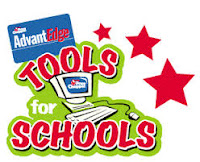UPDATE: Please note that the dates of the course have changed this this was first posted. Our start date it Feb. 4. See Temple Sinai's webpage for the correct dates.
From the Shalom Hartman Institute in Jerusalem, the URJ and ARZA:
Israel's Milestones and Their Meanings: The Legacy of the Past and the Challenge of the Future
Memory is a central element in defining modern Jewish
identity. As we look to Israel's future, we need to engage anew with our past
and explore its meanings and consequences. Through the consideration of major
historic moments, this iEngage series grapples with the different ideas and
values that shape the meaning of Modern Israel, Zionism, and Jewish identity
today.
This innovative course explores the pivotal events of 1947
and 1967 - following the 1917 Balfour Declaration - as key moments when Zionism
unleashed new thinking about the meaning of Jewishness for generations to come.
The course engages Jews in an open and pluralistic discussion about issues of
Jewish identity, peoplehood, ethics and theology as they relate to nationhood,
land, sovereignty, Jerusalem, occupation, and moral red lines.
Classes are at 10:00 a.m. on the following dates:
- Jan. 14 & 28
- Feb. 4 & 18
- Mar. 11 & 25
- Apr. 8
- May 6
Additionally, there are three webinars led by Scholars from the URJ and
Israel on March 1, April 12, and May 17, all Thursdays, all at noon.
These video sessions originate from the Hartman Institute
and are facilitated on site by Bruce Hicken.
This course is made possible by a generous grant from the
URJ and ARZA and is being offered for free to Temple Sinai members and non-members. Source readings will be provided for free in
PDF format. These readings are also
available in a printed book, which you may order yourself from the Hartman
Institute for $20.00.
Donations are gladly accepted. All participants do need to
sign up in advance, even if you cannot attend all classes.
To sign up, please email
iEngage@templesinaivt.org

















